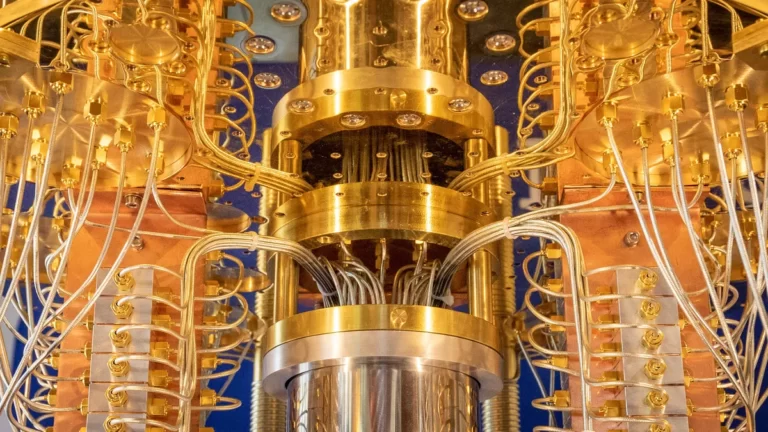There are two main types of quantum computers: gate-based quantum computers and adiabatic quantum computers.
Gate-based quantum computers, also known as circuit-based quantum computers, use quantum logic gates to manipulate qubits and perform calculations. They are based on the principles of quantum circuits, which are similar to classical circuits used in traditional computers. In a gate-based quantum computer, a series of quantum logic gates are applied to the qubits to perform a computation. The computation is complete when the output qubits are measured, and the results are read out in the form of classical bits.
Adiabatic quantum computers, also known as annealing quantum computers, use quantum annealing to perform calculations. In this type of quantum computer, the qubits are initialized in a known state and then allowed to evolve according to the quantum mechanics of their system. The computation is complete when the qubits reach the lowest energy state, which is the solution to the problem that was being solved. Adiabatic quantum computers are designed to solve optimization problems, such as finding the shortest path through a network or the minimum value of a function.
Both types of quantum computers have the potential to perform calculations that are beyond the capabilities of classical computers, but they differ in the way they approach computation and the types of problems they are best suited to solve. Quantum computing is a rapidly-evolving field, and there are many different approaches to building them. Now, let's will explore some of the different types of quantum computers and their capabilities.
One of the main types of quantum computers is the superconducting qubit. In a superconducting qubit, a tiny circuit is cooled to near absolute zero, and a current is passed through it. This creates a quantum state that can be used to perform calculations. Superconducting qubits are relatively easy to control and manipulate, making them a popular choice for quantum computing research.

Another type of quantum computer is the trapped ion quantum computer. In this type of quantum computer, ions are trapped in a vacuum using electric fields. The quantum state of the ions can then be controlled using lasers, allowing them to be used for calculations. Trapped ion quantum computers are very stable, but they are also more difficult to control than superconducting qubits.

Another approach to quantum computing is the use of photonic qubits. In a photonic qubit, a photon is used as the qubit, and its quantum state is manipulated using optical devices such as beam splitters and mirrors. Photonic qubits are very fast and can be easily transmitted over long distances, but they are also very fragile and difficult to control.

Overall, there are many different approaches to building quantum computers, and each has its own strengths and limitations. As the field of quantum computing continues to evolve, we can expect to see even more developments and innovations in this area.




